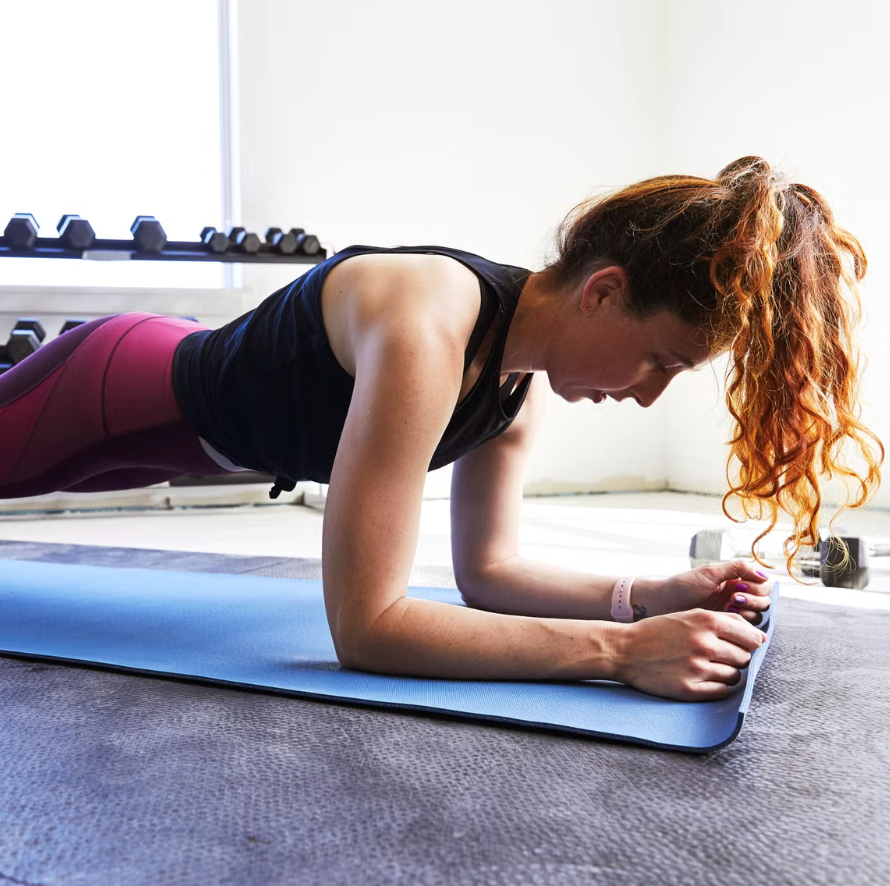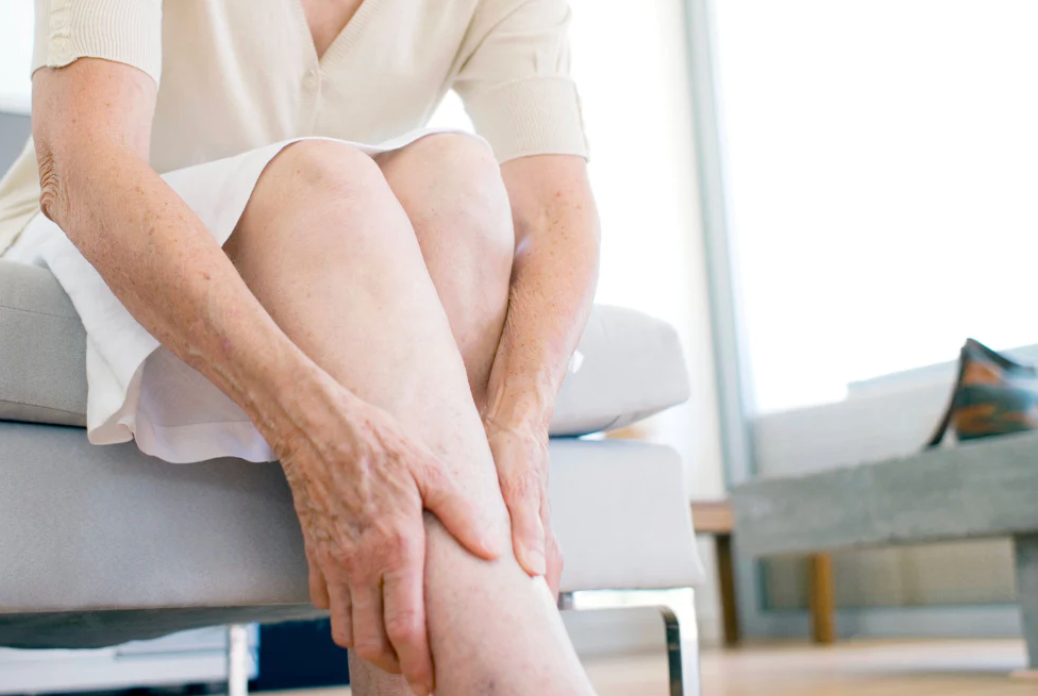By Pelvic Pain Foundation
Pelvic tension and stiffness can affect everything from posture and mobility to daily comfort. For many people seeking pelvic pain relief, regular pelvic stretches can help release tight muscles, improve pelvic mobility, and support long-term hip and joint health. For people living with musculoskeletal or inflammatory conditions, hip and pelvic tightness can contribute to pain in the lower back, glutes, or even the legs. The good news is that incorporating gentle pelvic stretches into your daily routine can help release tension, improve flexibility, and support long-term joint health.
In this guide, we’ll explore 12 simple pelvic stretches you can do at home or in the gym, along with tips for practicing safely and supporting recovery naturally.
Why Pelvic Stretches Are Important
Your pelvis is a key foundation of movement. When muscles around the hips and pelvis are tight or weak, discomfort can spread to the lower back and legs. Regular pelvic stretches help improve hip flexibility, release tension, and promote balanced movement. Regular pelvic stretches can:
-
Reduce stiffness in the hips and lower back
-
Support pelvic floor relaxation and mobility
-
Improve posture and spinal alignment
-
Enhance movement confidence in daily activities
-
Complement recovery for musculoskeletal or inflammatory conditions
12 Pelvic Stretches for Pain Relief and Flexibility
1. Deep Glute Stretch (Pigeon Pose Variation)
Helps release tight glutes and hip rotators.
-
From all fours, bring one knee forward and place it behind your hands.
-
Stretch the opposite leg back behind you.
-
Lean forward gently, reaching your arms out in front.
-
Hold for 5-8 breaths, then switch sides.
2. Deep Squat (Malasana)
Improves hip, groin, and ankle flexibility.
-
Stand with feet slightly wider than hips, toes turned out.
-
Lower into a squat, keeping heels on the floor if possible.
-
Rest your elbows inside your thighs for support.
-
If balance is tricky, sit on a low stool or hold a wall.
3. Happy Baby Pose
Opens the hips and relaxes the pelvic floor.
-
Lie on your back, knees bent.
-
Hold your feet, ankles, or calves.
-
Gently pull your knees toward your chest, keeping your back flat.
-
Rock side to side to massage the lower back.

4. Figure Four Stretch
Targets the glutes and outer hips.
-
Lie on your back with knees bent.
-
Cross one ankle over the opposite thigh.
-
Draw the supporting leg toward your chest until you feel a stretch.
-
Keep shoulders and neck relaxed.
5. Forward Lean Stretch
Lengthens hamstrings and releases the lower back.
-
Stand with feet slightly wider than hip-width.
-
Turn your toes inward slightly.
-
Hinge forward at the hips, letting arms rest on a chair, block, or the floor.
-
Keep knees soft and avoid locking them out.
6. Windscreen Wiper Stretch
Improves hip rotation and flexibility.
-
Sit on the floor with legs bent, feet wider than hips.
-
Drop both knees to one side like windscreen wipers.
-
Keep feet grounded and switch sides slowly.
7. Cat-Cow Flow
Mobilises the spine and pelvis.
-
Start on hands and knees.
-
Exhale and round your back, tucking chin and tailbone (Cat).
-
Inhale and arch your back, lifting chest and tailbone (Cow).
-
Flow slowly for 5-10 breaths.
8. Wide Knee Drop
Releases tightness in the hips and groin.
-
Lie on your back, feet flat and placed wider than hips.
-
Drop both knees to one side, feeling the stretch in the opposite hip.
-
Hold for a few breaths, then switch sides.

9. Child’s Pose
Stretches the hips, spine, and pelvic floor.
-
From all fours, spread your knees wide and sit back toward your heels.
-
Reach arms forward, resting forehead on the ground or a cushion.
-
Soften your belly and breathe deeply.
10. Supported Hip Flexor Stretch
Relieves tension in the hip flexors, often tight from sitting.
-
Step one leg forward into a lunge.
-
Place hands on blocks or a chair for support.
-
Tuck your tailbone under slightly, then lean forward.
-
Switch sides after 5-8 breaths.
11. Gentle Supine Twist
Releases the spine and hips.
-
Lie on your back, knees bent.
-
Cross one knee over the body while keeping shoulders grounded.
-
Stretch arms out in a “T” position.
-
Hold for 5-8 breaths, then switch sides.
12. Resting Pose (Savasana Variation)
Encourages full-body relaxation.
-
Lie on your back with knees bent and supported by a pillow.
-
Place your hands on your belly and breathe slowly.
-
Focus on relaxing your pelvis, ribs, and lower back.
Tips for Safe Practice
These gentle movements are designed to support pelvic mobility and help you find natural pelvic pain relief over time.
-
Hold each stretch for 5-8 deep breaths.
-
Focus on a gentle stretch, never forcing into pain.
-
Support your body with props (pillows, blocks, or walls).
-
Combine with slow breathing to release tension.
-
Aim for consistency - just 10-15 minutes daily can make a difference.
Supporting Pelvic Mobility with Natural Relief
Pair your daily pelvic stretches with Zea’s natural pain relief range to ease pelvic tension and support hip flexibility and recovery. Stretches work best when combined with natural support to ease discomfort:
-
Kunzea Pain Relief Cream - soothes tight muscles and eases joint stiffness.
-
MAGZEA Muscle Recovery Spray - helps calm cramping and supports muscle recovery.
-
Kunzea Bath Salts - ideal for a warm soak to relax hips and reduce soreness.
By pairing pelvic stretches with natural relief, you can support your body holistically - improving comfort, mobility, and long-term pelvic health.

About the Pelvic Pain Foundation of Australia
This blog was developed with resources from the Pelvic Pain Foundation of Australia (PPFA), a not-for-profit organisation dedicated to improving the lives of people living with pelvic pain. The Foundation provides education, advocacy, and practical tools to help patients and health professionals better understand and manage pelvic pain.
Learn more at: https://www.pelvicpain.org.au/




